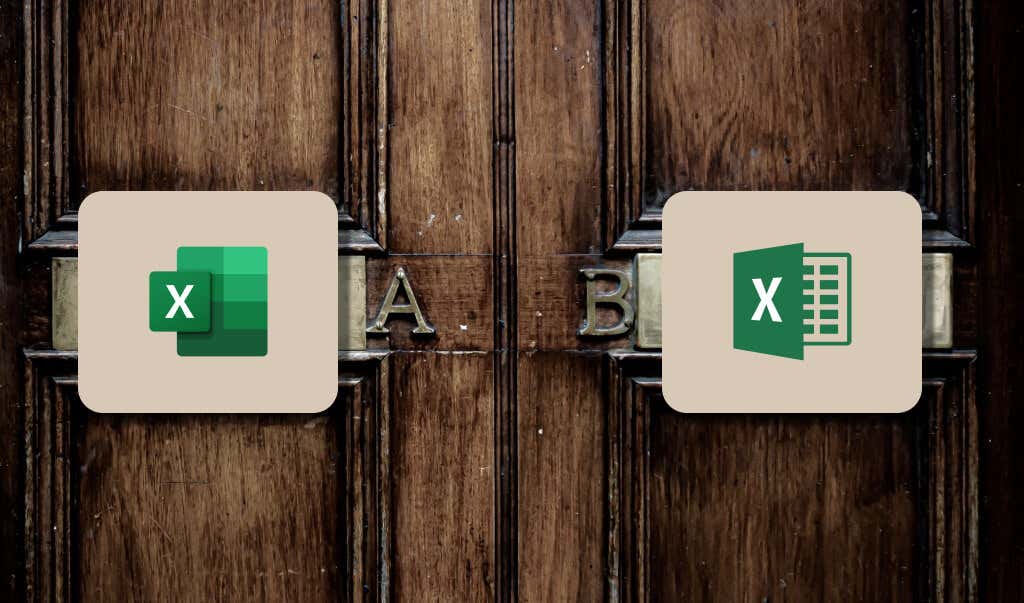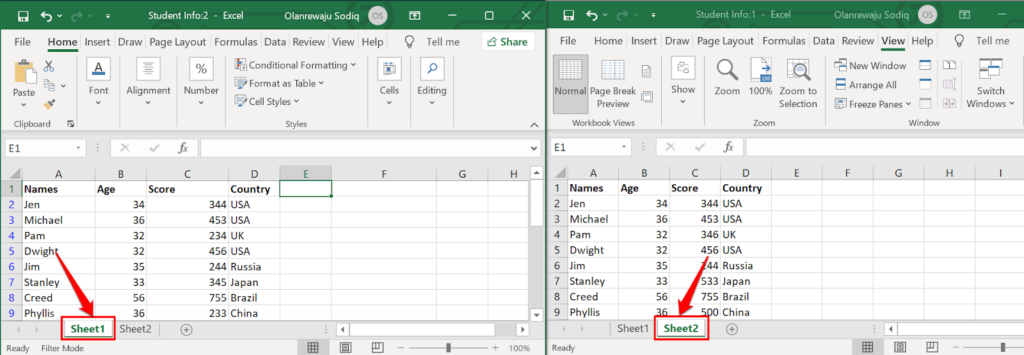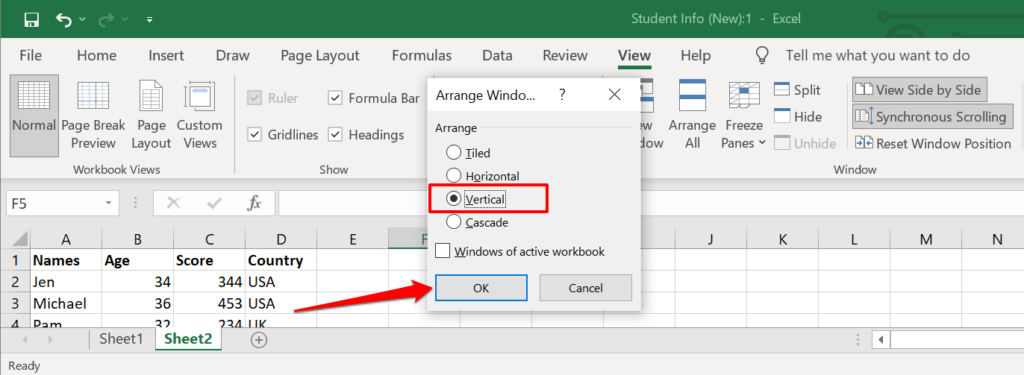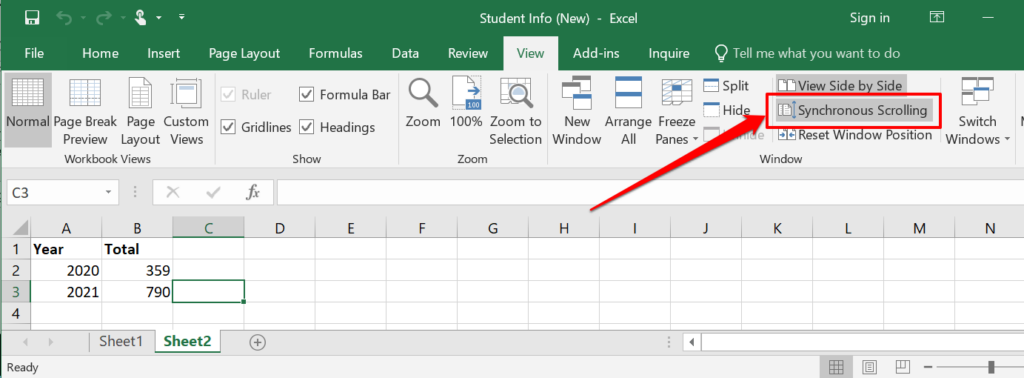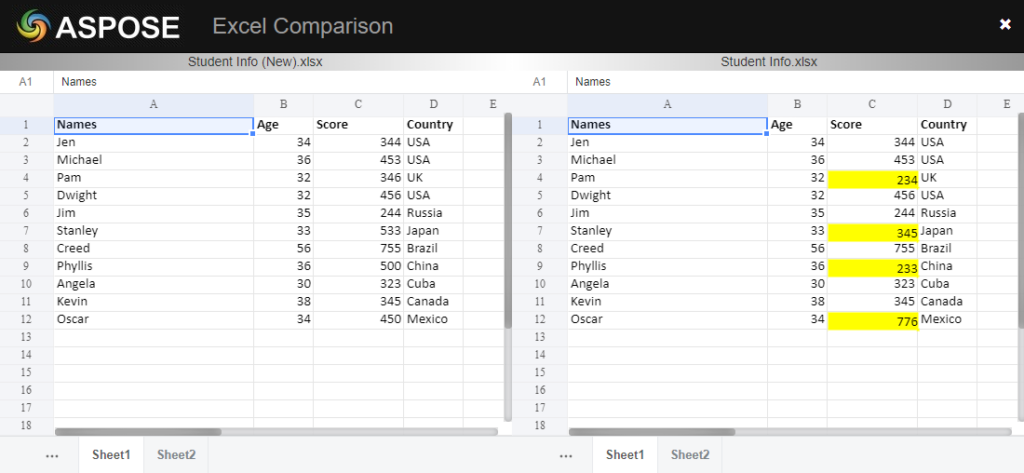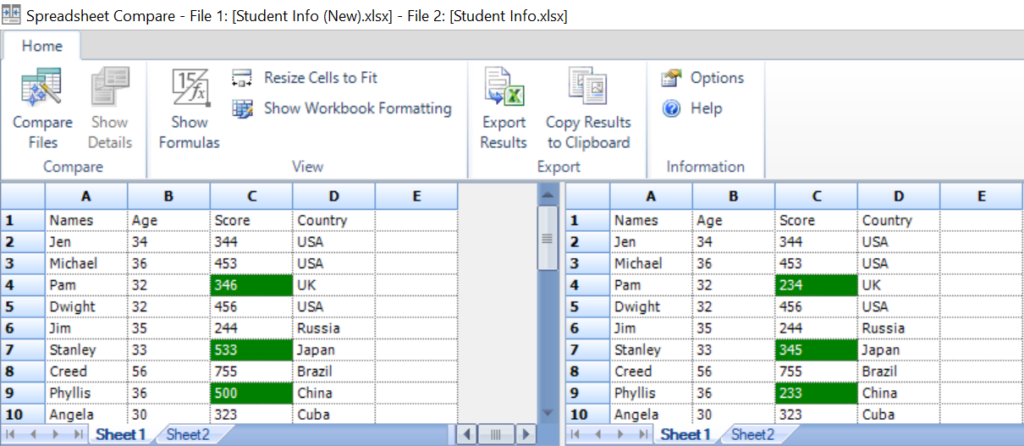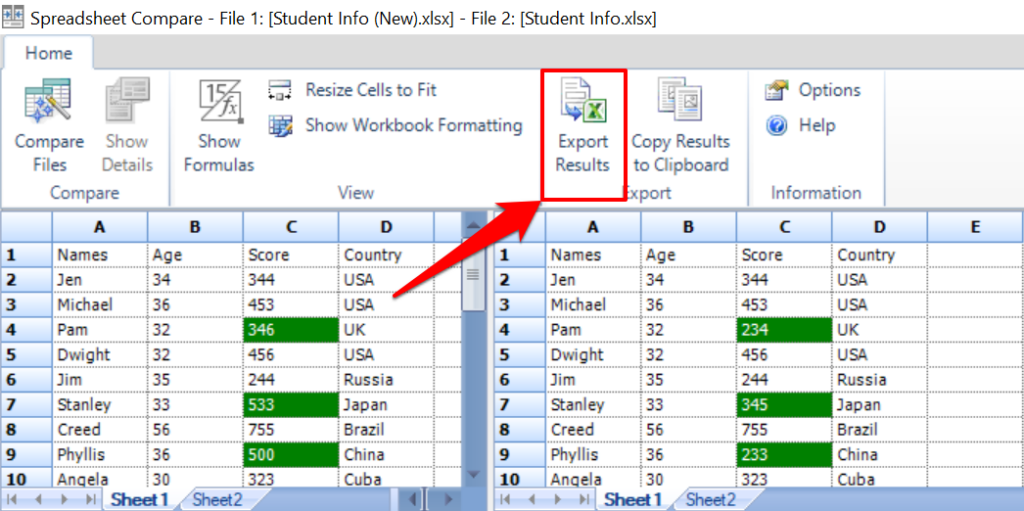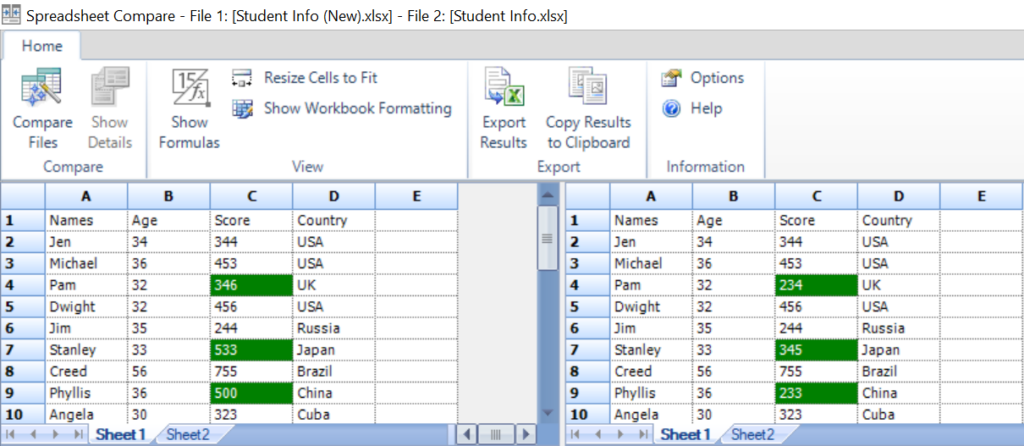Comparing two Excel files for differences is a basic skill for spreadsheet users. There can be two similarly named Excel files on your computer. How do you determine if the files are duplicates or different versions of the same Excel workbook? In this tutorial, we’ll show you how to compare two Excel files, even if you don’t have Excel installed on your computer.
These comparison tools can help you spot inconsistent data, outdated values, broken formulas, incorrect calculations, and other problems in your Excel worksheet.
1. Compare Two Excel Sheets by Viewing Them Side by Side
If you can peruse the sheet’s data at a glance, open them in a separate window and perform a side-by-side comparison using Excel’s “View Side by Side” feature.
- Open the Excel file with both worksheets, head to the View tab, and select New Window.
- In the new window, select or switch to the (second) worksheet you want to compare.
Resize or rearrange the windows so you have a side-by-side view of both worksheets on your computer’s display. Again, this method is best for comparing Excel worksheets with only a few rows or columns.
- If you’d rather use Excel’s comparison tool to place both windows side-by-side, choose the View tab and select the View Side by Side icon.
Excel will immediately arrange both worksheets horizontally on your computer’s screen. It might be a bit difficult to compare sheets in this landscape view, so proceed to the next step to change the orientation to a vertical/portrait arrangement.
- Head to the View tab again and select Arrange All.
- Select Vertical in the Arrange window and select OK.
That’ll stack both worksheets in a side-by-side position on your screen. There’s one more setting you need to enable to make the comparison a lot easier.
- Tap Synchronous Scrolling and make sure it is highlighted. This lets you scroll through both worksheets simultaneously, allowing for a synchronous row-by-row comparison of your dataset.
If the top rows of both worksheets are headers, ensure you freeze them so they don’t move with the rest of the dataset when you scroll through.
- Select Freeze Panes and select Freeze Top Row. Repeat this step for the second worksheet.
- Select Reset Window Position to revert the comparison orientation to landscape format.
- When you finish the comparison, select View Side by Side to revert the worksheets to their initial sizes.
Now you can scroll through both worksheets and compare them line-by-line. The major advantage of this feature is that it’s built into all Excel versions. However, you’ll still have to do a bunch of the work—i.e., spotting cells with varying figures, macros, formulas, etc.
2. Compare Two Excel Files Using Online Tools
There are web-based tools that offer Excel comparison services. You’ll find these tools beneficial if you don’t have Excel installed on your computer. This Excel Comparison tool by Aspose is a good web tool for comparing two Excel files.
Upload the first (primary) Excel file in the first box, drag the other file in the second box, and select the Compare Now button.
If the files have multiple sheets, select the sheets you want to compare in the Sheets tab. If both sheets have cells with different values or content, the Aspose Excel comparison tool will highlight the differences in yellow.
The limitation of these web-based tools is that they mostly highlight different values. They can’t highlight discrepant formulas, calculations, etc.
3. Compare Two Excel Files Using “Spreadsheet Compare”
Spreadsheet Compare is a reliable software for comparing two Excel files or worksheets. Sadly, it’s only available for Windows devices at the moment. It comes as a standalone program and is only available in the Professional Plus editions (Office 2013/2016/2019/2021) and Office 365 Enterprise. This add-in cannot be downloaded from the Microsoft website.
Use Spreadsheet Compare in Excel
If your Excel app is part of the above-mentioned Office packages, you can access the Spreadsheet Compare tool via the “Inquire” add-in. If there’s no “Inquire” tab in your Excel app, here’s how to turn it on.
- Select File on the menu bar.
- Select Options on the sidebar.
- Select Add-ins in the sidebar, select COM Add-in in the “Manage” drop-down menu, and select Go.
- Check the Inquire box and select OK.
Note: If you don’t find an “Inquire” checkbox in the COM Add-ins page, your Excel or Office version doesn’t support Spreadsheet Compare. Or perhaps, your organization’s admin has disabled the feature. Install the Office versions with Spreadsheet Compare pre-installed or contact your organization’s admin.
- Open both Excel files you want to compare in a separate window, head to the Inquire tab in the Menu bar, and select Compare Files.
- Excel will automatically add the first and second files to the “Compare” and “To” dialog boxes, respectively. Select Swap Files to interchange the primary and secondary files, or select Compare to start the comparison.
That’ll launch Spreadsheet Compare in a new window, highlighting any disparity within your dataset. Regular cells with different values will have a green highlight. Cells with formulas are formatted purple while cells with a macro will sport a turquoise fill color.
Select Export Results to generate and save a copy of the results to your computer as an Excel document.
The report will indicate the sheet(s) and cell references with varying datasets, as well as the exact values of the old and new data.
You can share the Excel report with your colleagues, team, or other people working collaboratively on the file.
How to Use Spreadsheet Compare as a Standalone Program
If your Excel or Office version doesn’t have the Spreadsheet Compare add-in, install the standalone software from the developer’s website. When installing the setup file, make sure you check the Register and activate the add-in in Excel box.
After installation, launch Spreadsheet Compare and follow these steps to use the program to compare the Excel documents.
- Select Compare Files in the “Home” tab.
- Select the folder icon next to the “Compare (older files)” dialog box to add the first document you want to compare to the tool. Add the second file to the “To (newer files)” box and select OK to proceed.
Spreadsheet Compare will process the files and highlight cells with varying values in green.
The Best Method to See Differences Between Excel Sheets
The “View Side by Side” comparison tool is the most viable option for Office Home or Students users. If you’re using Excel for Microsoft 365 or Office Professional Plus (2013 or 2016), the built-in “Spreadsheet Compare” tool is at your disposal. But if you don’t Excel on the desktop, web-based Excel comparison tools will get the job done. It’s really that easy.
